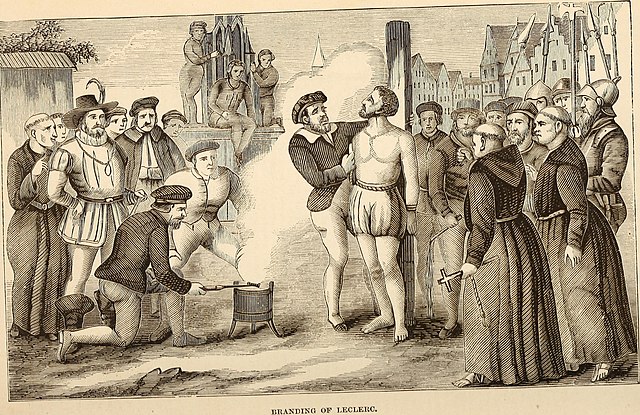Scarification involves scratching, etching, burning/branding, or superficially cutting designs, pictures, or words into the skin as a permanent body modification or body art. The body modification can take roughly 6–12 months to heal. In the process of body scarification, scars are purposely formed by cutting or branding the skin by various methods. Scarification is sometimes called cicatrization.
Detailed facial scarification
Aboriginal Australian with scarification of the back, 1911
Tribal crocodile scarification done near the Sepik River in Papua New Guinea
Scarifications on this child's face show his clan membership.
Human branding or stigmatizing is the process by which a mark, usually a symbol or ornamental pattern, is burned into the skin of a living person, with the intention that the resulting scar makes it permanent. This is performed using a hot or very cold branding iron. It therefore uses the physical techniques of livestock branding on a human, either with consent as a form of body modification; or under coercion, as a punishment or to identify an enslaved, oppressed, or otherwise controlled person. It may also be practiced as a "rite of passage", e.g. within a tribe, or to signify membership of or acceptance into an organization.
Modern strike branding
Branding of a naked enslaved woman in Africa
Branding of the Huguenot John Leclerc during the 16th century persecutions.
Whipping and branding of thieves in Denmark, 1728








